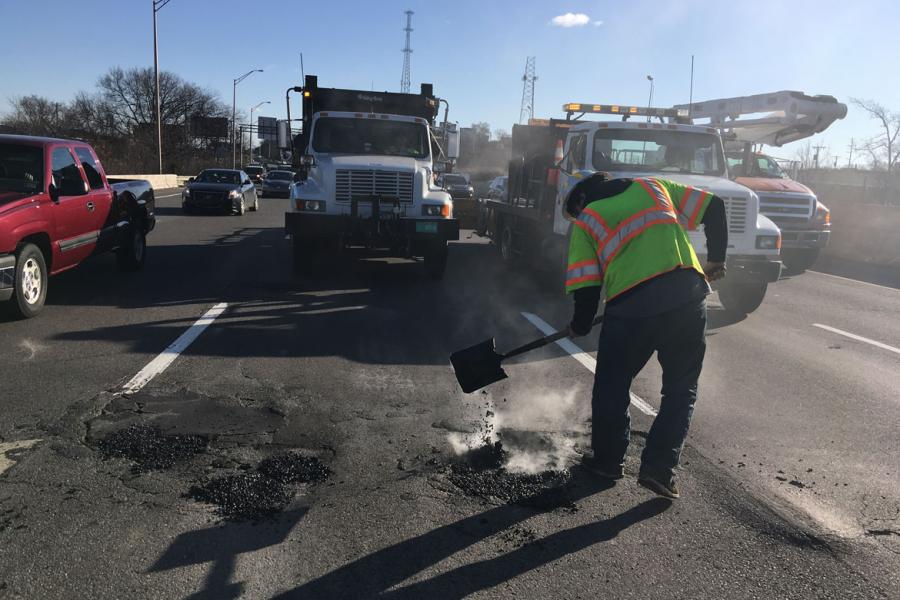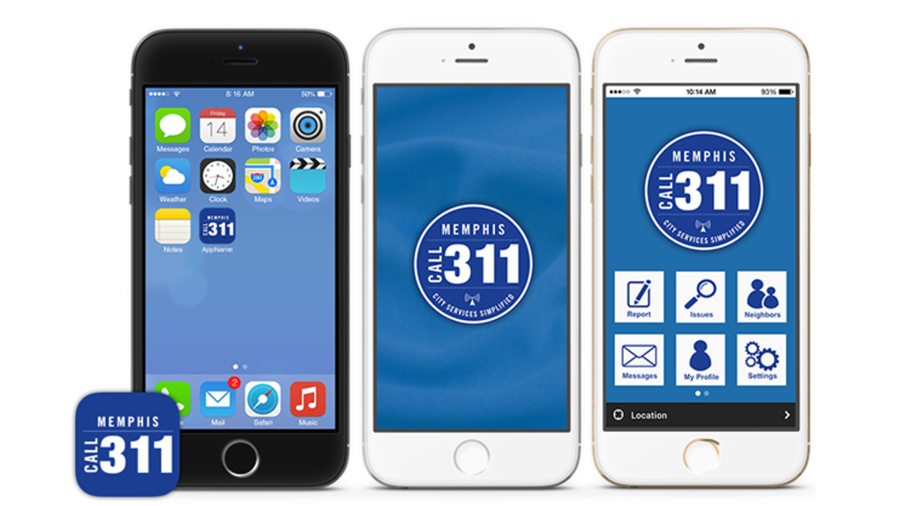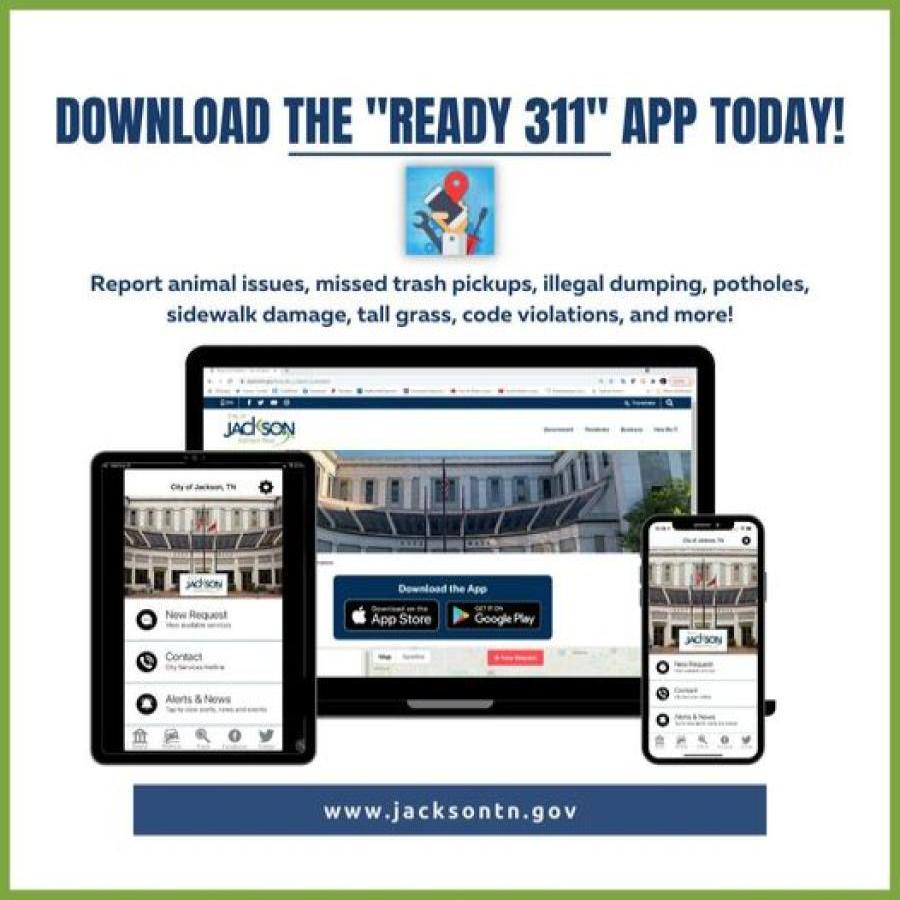311 apps helping cities track pot holes, maintenance progress

By KATE COIL
TML Communications Specialist
Noticing more potholes appearing after winter storms? There’s an app for that!
311 apps are helping cities across Tennessee keep track of severe weather, road damage, codes violations, street light outages, and much more.

Memphis was the first city to launch a 311 app in 2015 followed by Nashville’s launch of hubNashville in 2017. Knoxville and Jackson followed with 311 app launches in 2020 and Chattanooga launched its new rebranded 311 app on National 311 Day (March 11) in 2021.
Arlenia Cole, a spokesperson with the city of Memphis said the city’s app is a great way for residents to stay connected with issues they have reported.
“Citizens can download the 311 app on their cell phones,” she said. “Once the app is download they can either use it as an anonymous citizen or they can use it with their information to create an issue. It is important for the citizen because at any time they can check the progress of the issue and our agents mainly use the City CRM system but while working they can check app page for issue details.”
Jackson Mayor Scott Conger said the city’s 311 app allows citizens to report issues 24/7 and keep track of city progress on a problem step-by-step.
“They can pretty much report anything that’s a non-emergency,” Conger said. “We did a dual transition. We went from a regular helpline to actually implementing a 311 line to make it easier for people to call in. A lot of people work eight to five, so if they get home and have a need, they can do that at any time on the app. Right now, we have five things put into the app after five o’clock. We can then respond to it the next morning. They get an automated email saying that the ticket has been generated. It then notifies the person when the ticket was viewed and opened, any comments the inspector or department has, and when the ticket has been closed.”
GIS mapping on the app also allows for responses to pin down the exact location of a report.
“My street department really appreciate me, because we have a feature on there where you can pull up a pot hole page and ride around tagging pot holes,” Conger said. “I do that quite a bit.”
Cole said apps can streamline the process for city employees responding to reports as well as receive more information from citizens about a problem.
“The positive side is a citizen can enter as many concerns as they want on the app and also they are able to see updates at any time of the day,” she said. “If citizens are reporting concerns on the app it also help to minimize the call volume for the 311 team and as for the divisions it gives them the opportunity to see exact location of the issues with the photos. While reporting an issue citizen has to answer certain questions that will help agents to track and work on the issue effectively.”
Through the ticketing process, Conger said the 311 app is a transparent way for citizens to see their government at work.

“The app provides a level of accountability for us and for the citizens,” Conger said. “It gives us accountability on how quickly we are responding and closing things out. It makes sure we are held accountable to the citizens we are responding to and doing so in a timely manner. The accountability goes both ways. Just yesterday, I got an email from a citizen who said they had put in a ticket three weeks ago, they told me it would be done in two weeks, and it still isn’t done. I checked on it and the ticket had only been put in six days ago.”
Cities can also use apps to gather data about issues ranging from maintenance needs to garbage and recycling pickup to potholes to requests for increased police patrol. Cole said the data provided by Memphis’ app can be used by citizens to keep track of issues in their area and by city officials to help track their progress and make government more data-driven.
“When people are trying to report an issue they can see issues reported for the same location and also citizen can set alerts for them to receive notification if issues are reported for certain area,” she said. “We have metrics collected from our main CRM system that being analyzed by the city’s analyst. The data is available in the city’s website and also usually provided based upon citizens request.”
Conger said metrics recorded by the city’s 311 app can help direct city resources where they are most needed as well as put data-driven measurement on government performance.
“It shows the areas of need we have to focus on,” he said. “We can see who is reporting, where the greatest issues are, and if we need to focus more resources from a department on that area. We can also see how quickly we are responding. That allows us to see if we need to allocate more people or resources to an area. It also gives us a metric we can take to our employees and say ‘hey, you’re doing a great job.’”
Conger said the app has also helped Jackson take a more targeted approach to city services. The system allows the city to be more efficient and show citizens when routine maintenance is planned in their area.
“Our app is built in with our website and has a website reporting capability as well,” Conger said. “We’ve also utilized this as almost a work-order format for our maintenance department. It makes it so much cleaner and more efficient. It creates transparency and accountability for both our citizens and our departments. It’s great if you want to measure where your problem areas are or how well your departments are responding. A lot of times, we look at these platforms and focus on where we aren’t doing well, but it also gives us a chance to see where we are doing well and praise those departments. It gives that positive reinforcement as well.”

